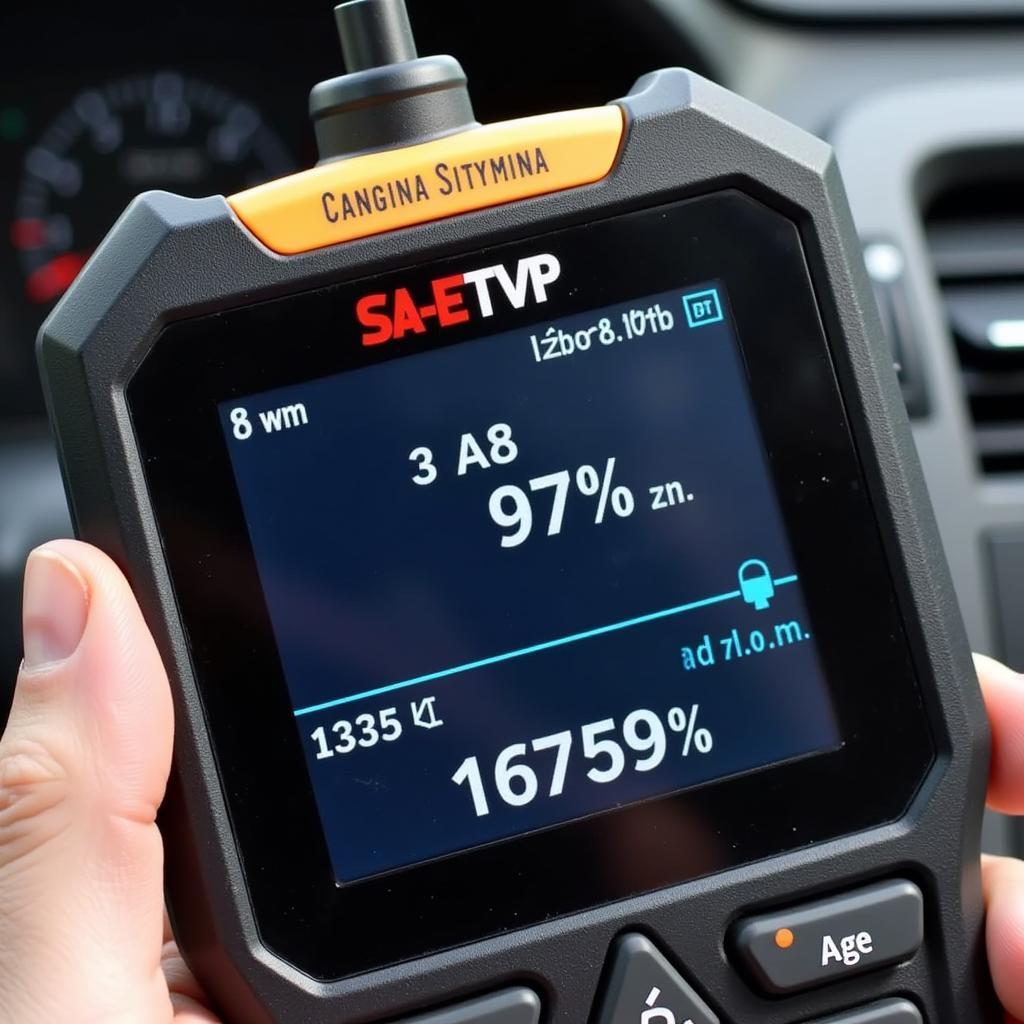Understanding the normal EVAP pressure percentage readings on your scanning tool is crucial for accurate diagnostics and efficient vehicle maintenance. This article will delve into the intricacies of EVAP system pressure, its significance, and how to interpret those readings on your diagnostic scanner. We’ll cover everything from the basics of the Evaporative Emission Control (EVAP) system to troubleshooting common issues.
What is EVAP Pressure and Why Does it Matter?
The EVAP system prevents fuel vapors from escaping into the atmosphere. It captures these vapors and stores them in a charcoal canister, later purging them into the engine for combustion. The pressure within this system is a key indicator of its health. Monitoring the EVAP pressure percentage helps identify leaks, blockages, and other malfunctions that can impact fuel efficiency, emissions, and overall vehicle performance.
How Does the EVAP System Work?
The EVAP system is a closed system, meaning it should maintain a specific pressure range. When the engine is off, fuel vapors are stored in the charcoal canister. When the engine is running, the purge valve opens, allowing these vapors to be drawn into the intake manifold and burned in the engine. A faulty component, like a leaky gas cap or a malfunctioning purge valve, can disrupt this delicate balance, leading to abnormal EVAP pressure readings.
Normal EVAP Pressure Percentage: What to Expect
The “normal” EVAP pressure percentage can vary slightly depending on the vehicle make and model, ambient temperature, and engine operating conditions. However, a healthy EVAP system typically operates close to atmospheric pressure (0 inches of water gauge pressure) when the engine is off. This translates to roughly 0% on many scanning tools. When the engine is running, the pressure can fluctuate as the purge valve opens and closes.
Interpreting EVAP Pressure Readings on Your Scanning Tool
Your scanning tool will display the EVAP pressure either as a percentage or in inches of water gauge pressure. A significantly positive or negative pressure reading can indicate a problem. For instance, a high positive pressure could suggest a blockage, while a high negative pressure might point to a leak.
 Scanning Tool Displaying EVAP Pressure
Scanning Tool Displaying EVAP Pressure
Troubleshooting Common EVAP System Issues Using Pressure Readings
Understanding how to interpret EVAP pressure readings can significantly aid in troubleshooting. Here are some common scenarios:
- High Positive Pressure: This often indicates a blockage in the EVAP system, possibly in the vent valve, purge line, or charcoal canister.
- High Negative Pressure: This typically points to a leak, which could be in the fuel tank, fuel lines, gas cap, or other EVAP components.
- Fluctuating Pressure: While some fluctuation is normal, excessive and erratic fluctuations can suggest a faulty purge valve or a problem with the EVAP system’s control circuitry.
Using Your Scanner to Pinpoint the Problem
Many advanced scanning tools allow you to perform specific EVAP tests, such as leak down tests and purge tests. These tests can help pinpoint the source of the problem more accurately than simply observing the pressure reading.
“Accurate diagnosis requires a thorough understanding of the EVAP system and its pressure dynamics,” says John Miller, Senior Automotive Diagnostic Technician at Miller’s Auto Repair. “Don’t rely solely on the pressure reading; use it in conjunction with other diagnostic information and tests.”
Conclusion: Mastering EVAP Pressure Diagnostics
Understanding normal EVAP pressure percentage on a scanning tool is essential for effective vehicle diagnostics. By interpreting these readings correctly and utilizing additional diagnostic tests, you can quickly and accurately identify and resolve EVAP system issues, ensuring optimal vehicle performance and minimizing emissions. Remember that while pressure readings provide valuable insights, they should be used in conjunction with a comprehensive diagnostic approach.
FAQ
-
What is a typical EVAP pressure reading? A typical reading is close to 0% or atmospheric pressure when the engine is off.
-
What causes high EVAP pressure? A blockage in the system is a common cause.
-
What causes low EVAP pressure? A leak in the system is often the culprit.
-
Can a loose gas cap cause abnormal EVAP pressure? Yes, a loose or damaged gas cap is a frequent cause of EVAP leaks.
-
How do I test my EVAP system? Use a scanning tool to monitor pressure and perform specific EVAP tests.
-
What are the symptoms of a faulty EVAP system? Symptoms can include a check engine light, poor fuel economy, and the smell of gasoline.
-
How can I fix a faulty EVAP system? Repairing a faulty EVAP system depends on the specific problem identified through diagnostics.
For further assistance or if you have any questions regarding your specific vehicle’s EVAP system, please do not hesitate to contact us via WhatsApp: +1(641)206-8880, Email: [email protected] or visit us at 276 Reock St, City of Orange, NJ 07050, United States. Our 24/7 customer service team is always ready to help.


